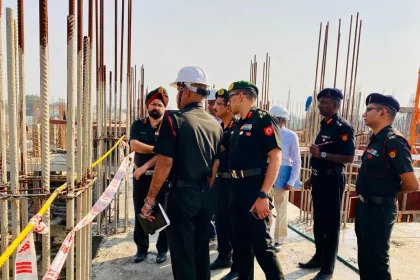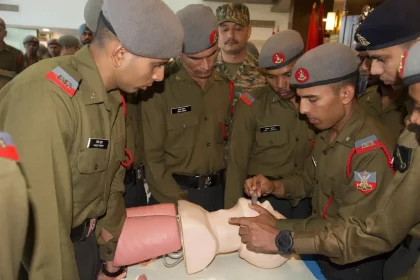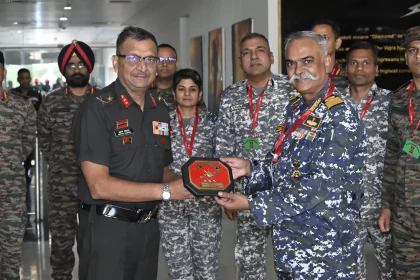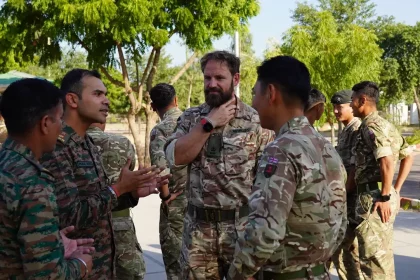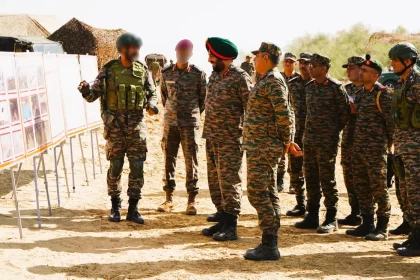Major Somesh M Kaul Wins Dr BK Mathur Gold Medal at GERICON 2025
AFMC Pune officer honoured for outstanding research on digital health literacy among the elderly.
Lt Gen CG Muralidharan Reviews Medical Infrastructure and Interacts with Staff During Visit to Military Hospital Meerut
DGMS (Army) commends high standards of medical care and examines progress of proposed new hospital project.
IMA Cadet Yodha Rakshak Exercise Trains 453 Future Officers in Critical Combat Casualty Care
Elite AMCC Centre instructor team enhances frontline trauma response through intensive hands-on training at IMA Dehradun.
Higher Defence Management Course 21 visited the Headquarters of Sapta Shakti Command
Future military leaders briefed on multi-domain operations, logistics dynamics and capability development initiatives.
UK Army Contingent Arrives in India for Exercise Ajeya Warrior 2025
2 Royal Gurkha Rifles receives a warm traditional welcome from the Indian Army’s SIKH Regiment ahead of joint drills.
Lt Gen Manjinder Singh Reviews Operational Preparedness of Bhairav Strike Force and Ranbankura Division
Sapta Shakti Army Commander commends high-tempo training, precision manoeuvres and future-ready capabilities.


